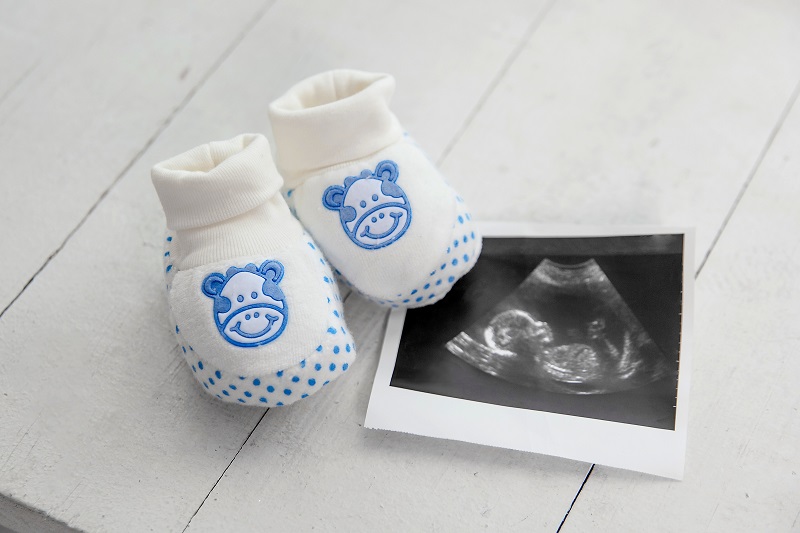Subscribe to our Telegram channel! Useful information about pregnancy and childbirth from leading obstetricians and gynecologists in Moscow, advice and opinions from leading pediatric specialists: t.me/roddomEMC
While waiting for a baby, future parents like to dream about what he will be like. Will he inherit his mother's blue eyes, his father's height and posture, and his grandmother's smile? But the main question, of course, is whether it will be a girl or a boy? Different nations have a lot of conventions and amazing theories on this subject. EMC obstetrician-gynecologist, Candidate of Medical Sciences, talks about whether it is possible to determine the sex of a future baby without ultrasoundOlga Loginova.
We determine the gender by the shape of the abdomen
In some expectant mothers, the belly becomes noticeable almost from the 10th week of pregnancy, in others it may not be visible until the middle of the second trimester. These features could not be ignored.
People say: "The belly grows forward – towards the boy." One of the popular folk traditions says: if a woman's tummy is small and neat, located high, sharp ("cucumber"), and it is not even visible from the back, it means there will be a boy. If the belly is large, low–set, protruding from the sides, and the fact that the woman is pregnant is clearly visible even from the back - this is a sure sign of the birth of a girl.
Doctors say that the shape of a pregnant woman's belly is influenced by a large number of factors. These include, in particular, the gestational age (gestational age, fetal size), the position of the fetus in the uterus, as well as the figure of the expectant mother before pregnancy. The belly of a thin and tall woman will always be different from the belly of a stout woman of short stature. Thus, from a medical point of view, the relationship between the shape of the abdomen and the sex of the unborn child is very doubtful.

By taste preferences
Herring with jam, chocolate with a wobble, chips with yogurt or milk with a pickle – expectant mothers often want to eat something unusual, and their desires are unpredictable. Why not think about the connection of your taste preferences with the gender of the expected baby? People say that a mother expecting a daughter experiences an irresistible craving for sweets in the early stages of pregnancy. And if a passionate fan of chocolates is suddenly drawn to smoked meat and pickles, wait for the boy.
Doctors say that eastern medicine explains the change in taste preferences during pregnancy: each human organ has a specific taste: for example, the liver "likes" sour, the spleen and stomach sweet, the kidneys are "greedy" for salty, the gallbladder for tart and bitter. According to this theory, it should be assumed that all pregnant boys have some kind of kidney problems, which is strange.
By changes in appearance
Pregnancy, as they say, makes some women beautiful: smooth skin, wonderful complexion, thick hair, shining eyes. Other expectant mothers, on the contrary, notice that their appearance has changed for the worse: inflammation, pimples appear on the face, the skin becomes more oily, sometimes a lot of hairs appear on the face, stomach and other parts of the body. All this is the work of hormones. The strongest hormonal changes during pregnancy affect each expectant mother in different ways.People say that if a woman gets prettier with pregnancy, then she is expecting a boy. The girl "takes away" the beauty from her mother. However, the active growth of "unnecessary" hairs is associated precisely with the fact that a woman is carrying a male baby.
Some doctors say that the male hormone testosterone affects hair growth, so if a mother has a boy in her stomach, she may have unwanted body hairs. In fact, studies show that this is not the case: the testosterone content in the fetal blood is not enough to influence the mother's body and, consequently, to change the rate of hair growth.
By the strength of toxicosis
Toxicosis often overshadows the expectation of a child: the expectant mother's body experiences hormonal stress and initially tries to fight the "foreign body" - the embryo. Until the body gets used to the new life that is emerging in it, it rejects it. However, some women experience only mild nausea, while others literally "turn inside out" during the first months of pregnancy.
People say that if a pregnant woman has severe toxicosis in the first trimester, this is a sure sign that a girl will be born. Mothers practically do not suffer with boys.According to doctors, this sign is not rejected by scientists either. They believe that morning sickness is a consequence of elevated levels of the hormone HCG (human chorionic gonadotropin), which indicates that the fetus is female.

Sex determination by a doctor
In fact, only special tests and medical research can help a couple determine the sex of their unborn child.
These include:
-
Fetal ultrasound. As a rule, the sex of the child is determined at the 16th week of pregnancy. The accuracy of the method is 80-90%.
-
Amniocentesis. In this case, the amniotic fluid surrounding the fetus is examined. The method is usually used to diagnose various genetic abnormalities of the fetus, but the sex of the unborn child can also be determined with 100% accuracy. It is invasive, that is, penetrating, and entails certain risks, including miscarriage. Therefore, aminocentesis is performed according to strict indications and never for the purpose of determining the sex of the child.
A DNA test is very accurate in determining the sex of the baby, but at the same time no less expensive. It is not widely used: it is carried out in highly specialized laboratories and only for special indications.
Subscribe to ourTelegram. You will find useful information about pregnancy and childbirth from leading obstetricians and gynecologists of the EMC.
.webp)







.webp)



.webp)



.webp)
